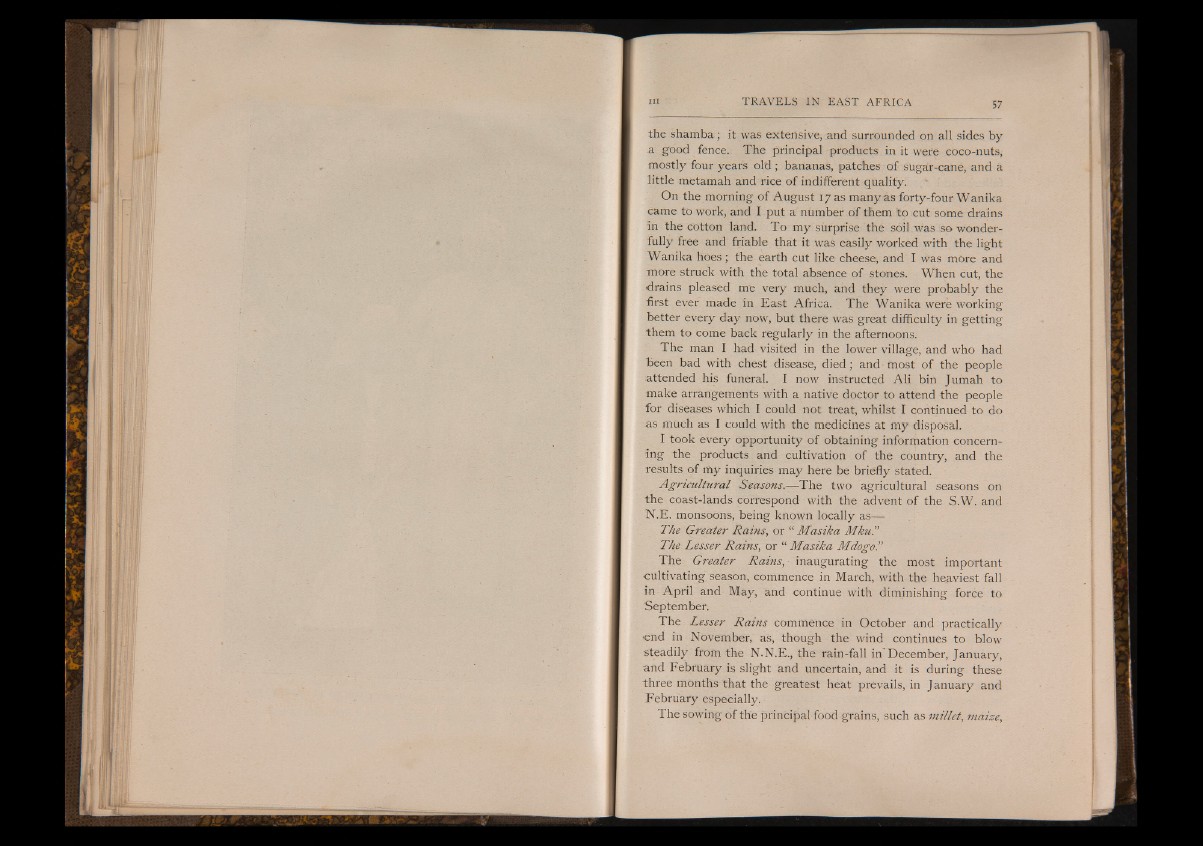
TRAVELS IN EAST AFRICA
the shamba; it was extensive, and surrounded on all sides by
a good fence. The principal products in it were coco-nuts,
mostly four years old ; bananas, patches of sugar-cane, and a
little metamah and rice of indifferent quality.
On the morning of August 17 as many as forty-four Wanika
came to work, and I put a number of them to cut some drains
in the cotton land. To my surprise the soil was so wonderfully
free and friable that it was easily worked with the light
Wanika hoes; the earth cut like cheese, and I was more and
more struck with the total absence of stones. When cut, the
drains pleased me very much, and they were probably the
first ever made in East Africa. The Wanika were working
better every day now, but there was great difficulty in getting
them to come back regularly in the afternoons.
The man I had visited in the lower village, and who had
been bad with chest disease, died; and most of the people
attended his funeral. I now instructed Ali bin Jumah to
make arrangements with a native doctor to attend the people
for diseases which I could not treat, whilst I continued to do
as much as I could with the medicines at my disposal.
I took every opportunity of obtaining information concerning
the products and cultivation of the country, and the
results of my inquiries may here be briefly stated.
Agricultural Seasons.— The two agricultural seasons on
the coast-lands correspond with the advent of the S.W. and
N.E. monsoons, being known locally as^AA
The Greater Rains, or “ Masika Mku.”
The Lesser Rains, or “ Masika Mdogo.”
The Greater Rains, inaugurating the most important
•cultivating, season, commence in March, with the heaviest fall
in April and May, and continue with diminishing force to
September.
The Lesser Rains commence in October and practically
■end in November, as, though the wind continues to blow
steadily from the N.N.E., the rain-fall in December, January,
and February is slight and uncertain, and it is during these
three months that the greatest heat prevails, in January and
February especially.
The sowing of the principal food grains, such as millet, maize,